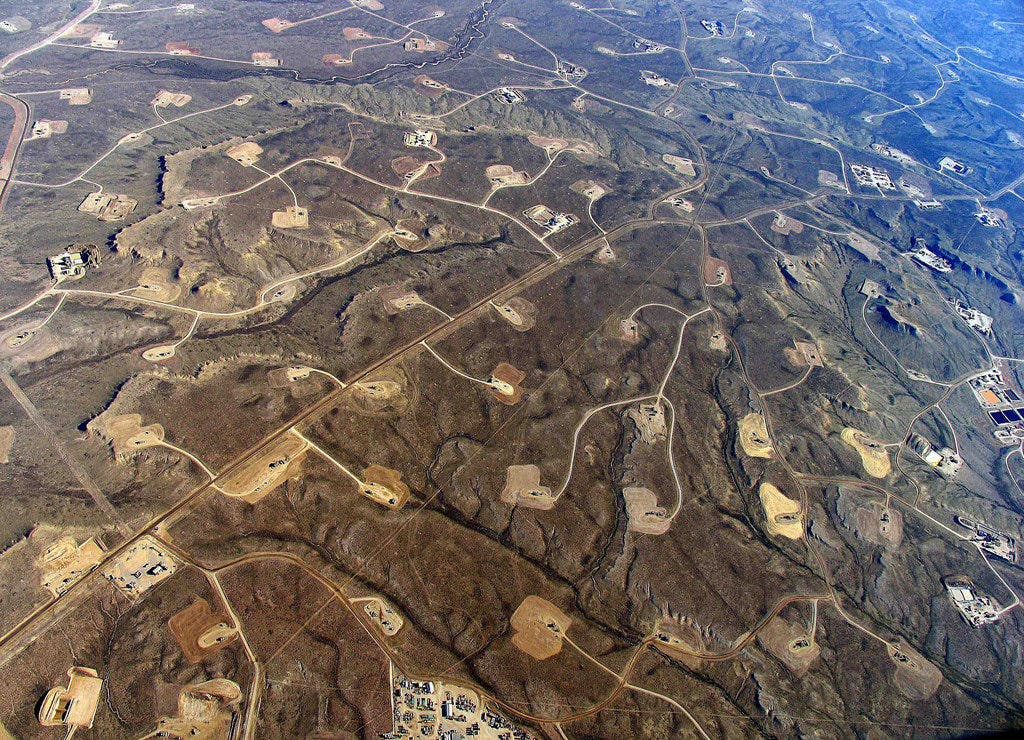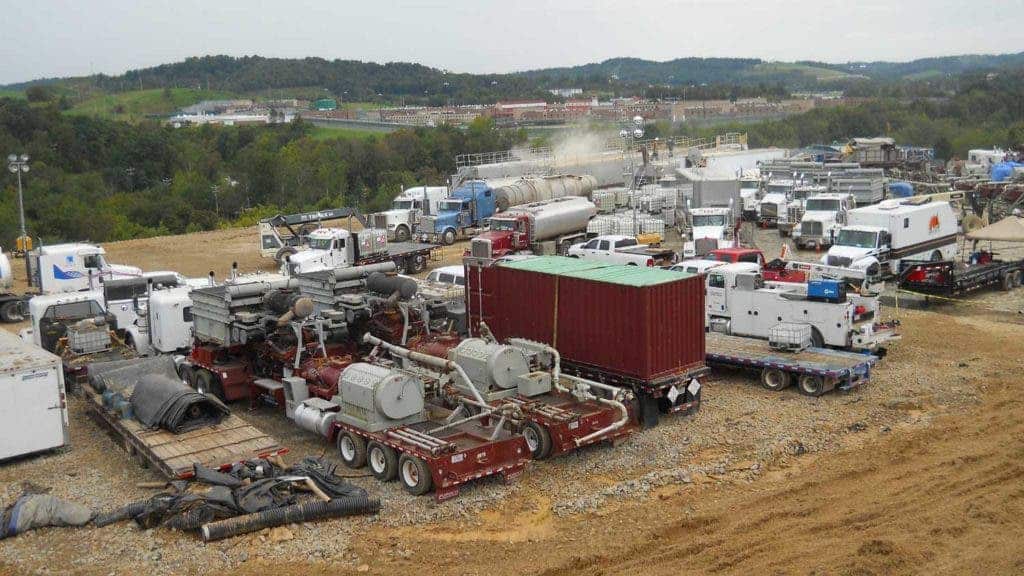Infants born close to fracking wells are 25% more likely to have low birth weights, according to a new study, raising concerns about its long-term health implications.

The merits of fracking — a process which relies on hydraulic fracturing to reach deposits of natural gas trapped in deep-lying rocks, generally shales — is nothing if not a hotly debated topic. Europe has, by-and-large, said no to fracking. It’s big business in the US, however, with some hailing it as an “energy revolution”. A term you could use, I reckon, if you’d consider slapping a band-aid on a broken leg instead of a cast as ‘revolutionary’ treatment.
Regardless of how fracking fits in the contexts of the global economy and climate change efforts, new evidence suggests that it also comes with unforeseen health implications. A new study, led by health economist Janet Currie at Princeton University, found that infants born in close proximity to a fracking well are more likely to have lower birth weights and score lower on a standard index of infant health.
Low birth weight is associated with a slew of health concerns, which can afflict an infant with life-long complications.
Fracked from birth
Fracking has enjoyed an extraordinary rise in the U.S. over the past 15 years. Concerns over its effects on public health, however, aren’t new. Previous research has linked living near oil and gas developments to a wide range of complications, from a higher incidence of cardiovascular disease, higher rates of asthma, migraines, cancer and neurological disorders, all the way to lower birth-weights of infants. These findings were often dismissed due to the low sample sizes they drew on, or the fact that they couldn’t prove the health effects got worse closer to drilling sites, as would be expected if fracking was to blame.
Some states, like Maryland and New York, have nevertheless opted for a “better safe than sorry” approach, banning fracking altogether. Other states, by contrast, have chosen to embrace it. Either way, like so many topics over the last few years, fracking stands poised to divide the country, at least until its risks and rewards are fully understood.

Image and caption credits to Simon Fraser University / Flickr.
To that end, the team at Princeton looked at the birth certificates of 1.1 million infants born in Pennsylvania between 2004 and 2013. This is one of the most intensely fracked states, and most of its over 10,000 wells were drilled during the period covered by the study. These certificates include addresses and vital statistics for each infant, such as birth weights, total months of gestation, birth defects, and other abnormal conditions. The team took this data and spread it (via address) on maps showing where wells were dug throughout the state. Finally, they plotted circles around each drilling site with radiuses of 1, 2, and 3 kilometers (0.62, 1.24, 1.86 miles).
The team reports that infants born within the tightest circle (1 km / 0.62-mile radius) around any well were 25% more likely to have low birth weights (under 2500 grams, or 5.5 pounds) compared to infants born outside any of the circles. They also scored significantly lower on a standard index of infant health. Infants born in the outer circles — between 1 and 3 kilometers from a well — showed lower average birth weights and scored lower on the health index than those outside the circles, but they were overall in better shape than the infants born in the tightest radius.
To make sure they weren’t picking up on other effects that could lead to poor infant health and health outcomes — for example race and socioeconomic background — the team factored out babies born in areas such as Pittsburgh and Philadelphia, which have higher rates of infants births with low weight. Further, they drew on a sample of 594 infants born inside the influence range of a well and their unexposed siblings (families who either lived somewhere else and then moved near the well, or who had a child before the well was drilled). Although the sample base was small, such comparisons showed that exposed infants were smaller and less healthy at birth than their unexposed brothers and sisters in the same families.
Run for the hills — or 2 miles away
One piece of good news, the authors say, is that these detrimental effects don’t extend far beyond the fracking sites. The team didn’t find any evidence of weight or health effects past 3 kilometers / 1.86 miles.

Image credits US Geological Survey.
However, the findings are far from painting a complete picture. The team still doesn’t know what aspect of fracking causes the observed effects. Currie, who specializes in the interplay between air pollution and health, says it likely comes down to airborne chemicals or the increased truck traffic and industrialization associated with fracking. Water pollution is an unlikely culprit, she believes, as many people in the study got their water from municipal sources, which aren’t close to fracking sites.
Oil and gas companies are having none of it, however. In an email to The Verge, Pittsburgh’s Marcellus Shale Coalition spokesperson Erica Clayton Wright said that the study falls far from definitively proving anything. Her main criticism is that it doesn’t do anything to address “crucial issues linked to low birth weights like smoking as well as alcohol and drug use” and that “given these deep methodological flaws, it’s dangerously misleading and inflammatory to suggest that natural gas development has done anything but improve public health” (it’s not). Then again, it’s not a very surprising claim coming from a company that’s trying to sell natural gas produced via hydraulic fracking. Neither is opposing tighter environmental regulation in regards to drilling nor backing a “citizen” initiative to take atomic energy (a direct competitor) off the market. All going towards the common public good, for sure.
I’d ask why people living within a 1-kilometer radius of a well smoke and drink more than people living 2 kilometers away. And why do both puff and chug more than those living between 2 and 3 kilometers away? It’s a striking coincidence. I’d probably be left unanswered.
Mrs. Wright is right on one point, however — there isn’t any smoking gun here, no God-given burning script in the sky linking fracking to poor infant health. Then again, gravity is just a theory as well. Nobody has ever ‘seen’ a chunk of gravity — we know it exists because we’ve gathered enough evidence (inconclusive on its own, very convincing in its sheer bulk) that gravity exists.
The present study isn’t alone. Others before it have reached similar results, even some beyond those found by Currie’s team, including evidence linking fracking activity to preterm births. How much ‘inconclusive’, ‘misleading’ and ‘inflammatory’ evidence must one gather for it to become ‘conclusive’? That’s a question each and every one living next to a well will have to grapple with for themselves.
On a final note, Currie adds that infants essentially acted as the “canaries” near the fracking mines, but they’re probably not the only victims. If they are affected, then the elderly and other vulnerable people living near wells are likely also at risk.
“We really should move beyond the discussion of whether there is a health effect or not to figuring out how we can help people who live close to fracking,” she concludes.
The paper “Unconventional Natural Gas Development and Birth Outcomes in Pennsylvania, USA” has been published in the journal Epidemiology.


